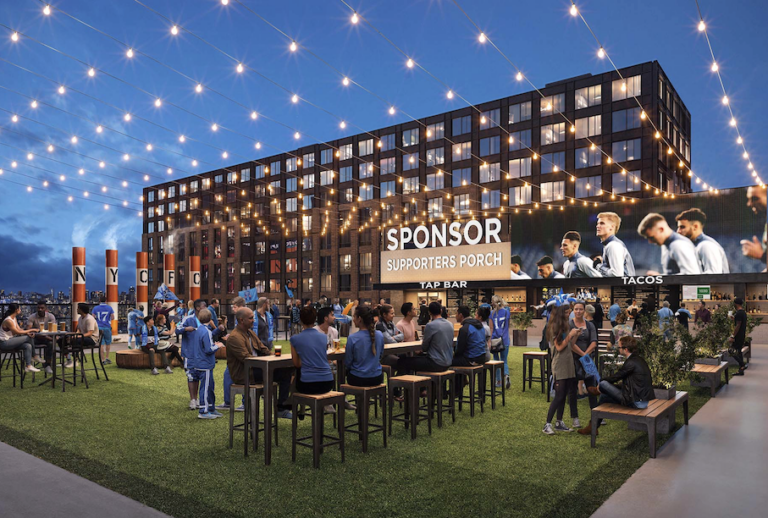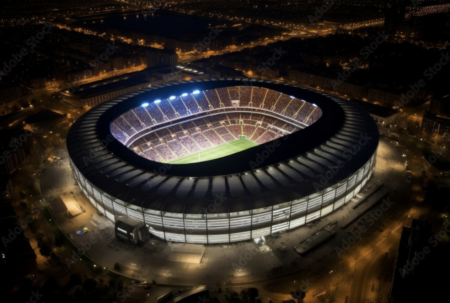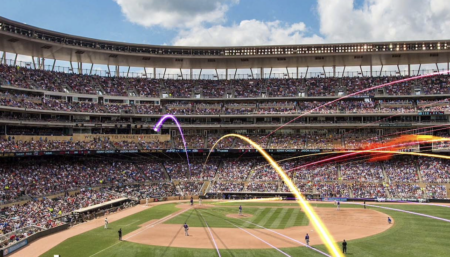As Major League Soccer nears its 30th year, its stadiums have undergone a dramatic evolution. Chris DeVolder, director of global sports + recreation + entertainment group for HOK, explores how soccer-specific venues are showcasing creative revenue-generating strategies
***
Savvy team owners are looking beyond traditional stadium fare to create holistic concessions experiences. With fans glued to their seats during the game, there is a narrow window before the game and at the half to maximize concession sales.
At St. Louis’ Energizer Park, the ownership team developed a compelling story around food and beverage from the time the stadium was first announced. They partnered with James Beard Award Winner Gerard Craft to build a distinctly St. Louis menu. They gathered input from more than 10,000 fans and partnered with 25 local restaurants to ensure 100% local food offerings. Combined with frictionless transactions and cashless payments, this thoughtful approach has transformed their concessions experience.
According to Stadium Tech Report, 74% of fans have the St. Louis CITY SC’s app installed and 20% make purchases through the app at mobile-enabled concession stands. The team’s checkout-free stands (using technology similar to Amazon Just Walk Out) boasts an average 90-second transaction time, with 33% of customers coming back, and represents 10% of all food and beverage sales in the venue.
Technology: beyond convenience
Video boards and LED ribbon boards are designed and programmed to maximize exposure for brands. New designs optimize these boards for beyond in-stadium impact.
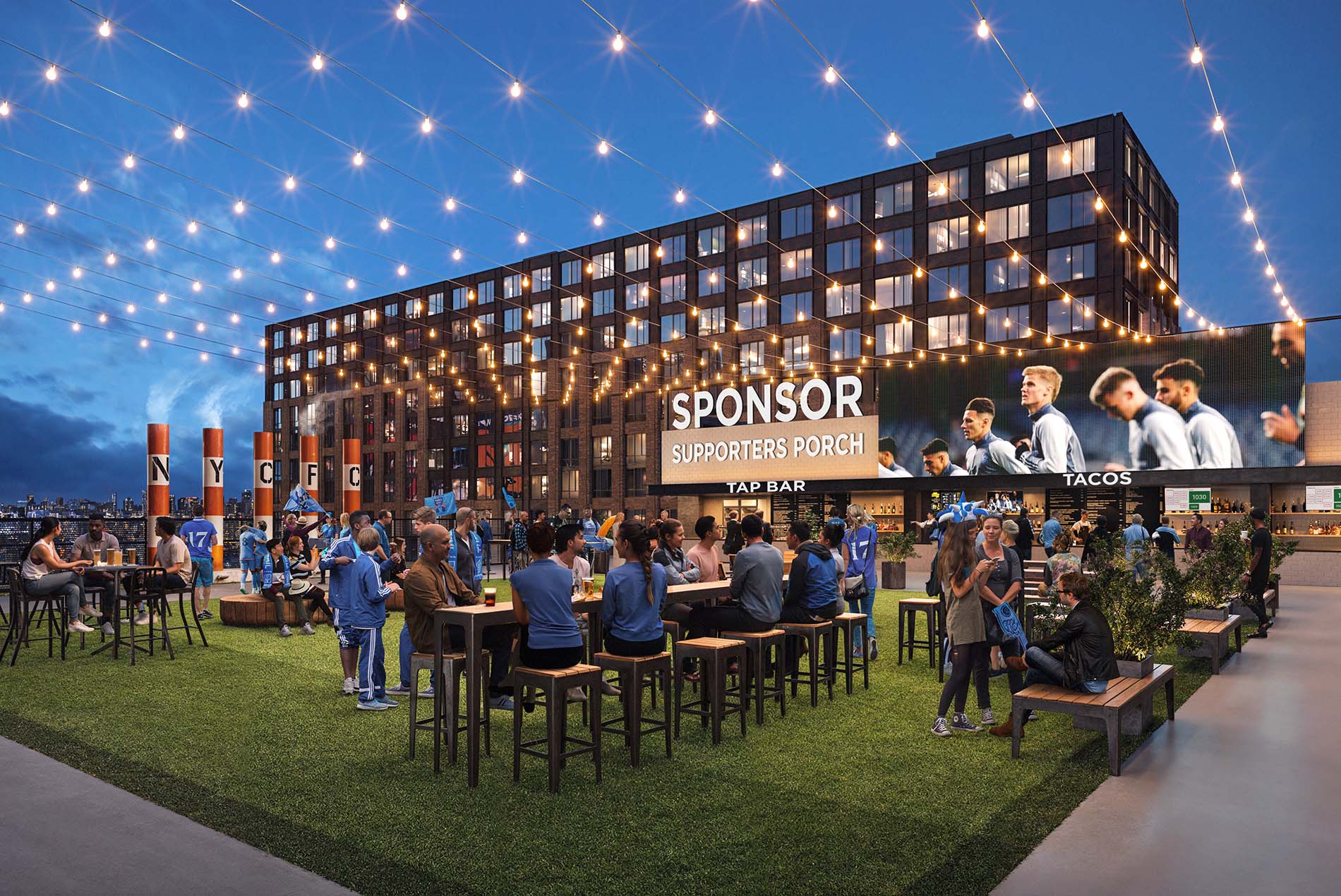
ABOVE: video boards are all about visibility for sponsors
We’re now finding innovative ways to place these video boards to improve the broadcast experience and provide more visibility for sponsors. Staggered ribbon boards, which appear unified on TV, have helped teams increase advertising revenue while creating a more immersive and engaging venue experience.
Hospitality: reimagining premium experiences
Today’s MLS stadiums feature sophisticated hospitality offerings tailored to their fans and cities. In St. Louis’ Energizer Park, the City View Terrace offers loge seats in a non-traditional spot—at the very top of the venue. These loge boxes, which seat 10-12 guests, offer sweeping views of downtown and the pitch, transforming a spot traditionally designated for lower-dollar general seating offerings into a lucrative premium product. MLS also boasts the youngest fan base among major U.S. sports leagues and an audience of digital natives. This gives designers the opportunity to introduce more progressive, creative premium offerings that can influence design strategies across all sports.
In New York, a new stadium for MLS’ New York City Football Club will dramatically elevate the hospitality experience in keeping with the high expectations of New York sports fans. The stadium’s clubs and premium spaces, designed by HOK hospitality experts who have worked on some of the world’s most prestigious hotels and resorts, feature immersive, intimate environments.
Community spaces
Investing in community spaces benefits both the city and the team. These outward-facing spaces—community plazas, multipurpose event spaces and restaurants that are all accessible from outside the venue—generate year-round traffic and revenue.
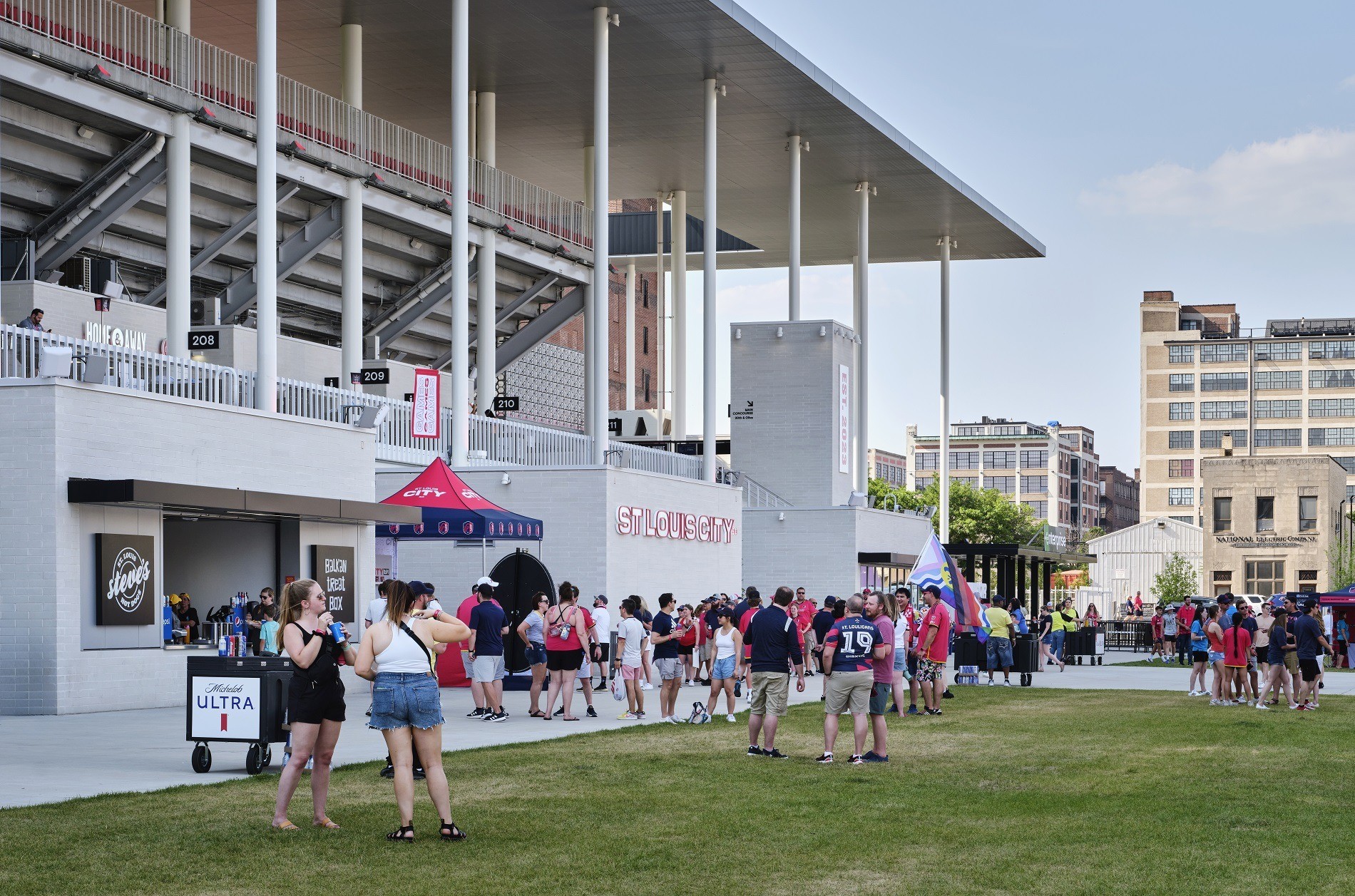
ABOVE: investing in community spaces benefits both the city and the team
Plazas can host concerts, small gatherings, yoga classes or a farmer’s market, while event and restaurant spaces can attract corporate events that continuously activate the building. Inside the venue, the sheer diversity of spaces can allow savvy event managers to sell progressive experiences to corporate clients—letting them move throughout multiple spaces in the venue throughout the evening.
At Energizer Park, regular plaza programming has created a true community asset with a definitive sense of place.


